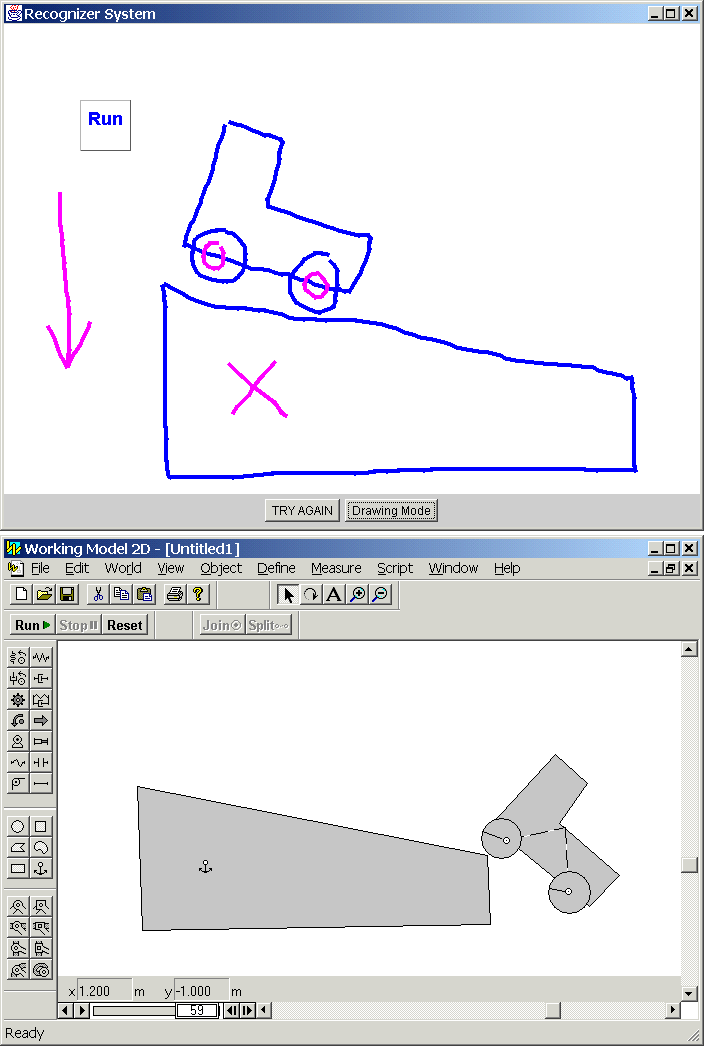ASSIST: A Shrewd Sketch Interpretation and Simulation Tool
Design rationale is often not recorded in mechanical engineering designs because it is not convenient to stop the design process to record every design decision that is made. Designing directly on the computer could assist the process of design rationale capture. At the very least a computer design tool could record all the changes made to a design over its lifetime.
Unfortunately, current computer-based design tools for mechanical engineers are not tailored to early stages of design. Most designers use pencil and paper at first, and input their design into CAD systems only after it is nearly complete. The tradeoff between the ease of drawing and the precision of a CAD tool is too great for engineers who are just sketching out rough designs.
We aim to create a tool that allows the engineer to sketch a mechanical system as she would on paper, and then allows her to interact with the design as a mechanical system, for example by seeing a simulation of her drawing. We have built an early incarnation of such a tool, called ASSIST, which allows a user to sketch simple mechanical systems and see simulations of her drawings in a two-dimensional kinematic simulator.

Videos
- Demonstration of ASSIST: [WMV format] 20 Meg [xvid avi format] 45 Meg
Publications
- Christine Alvarado and Randall Davis. Resolving ambiguities to create a natural sketch based interface. In Proceedings of IJCAI-2001, August 2001, pp. 1365-1371. [PS], [PDF]
- Christine Alvarado and Randall Davis. Preserving the freedom of paper in a computer-based sketch tool. In Proceedings of HCI International 2001, 2001, pp. 687-691. [PS], [PDF]
- Christine Alvarado and Randall Davis. Intelligent mechanical engineering design environment: From sketching to simulation. In MIT AI Laboratory Annual Abstracts, 2000. [PS], PDF
- Christine Alvarado. A natural sketching environment: Bringing the computer into early stages of mechanical design. Master's thesis, Massachusetts Institute of Technology, 2000.[PS], [PDF]